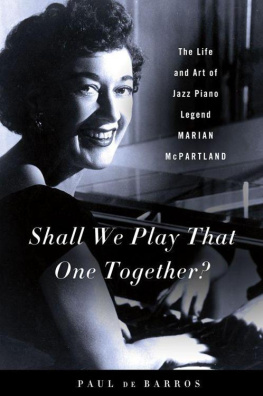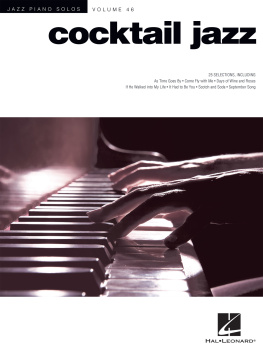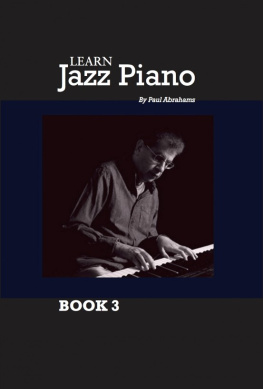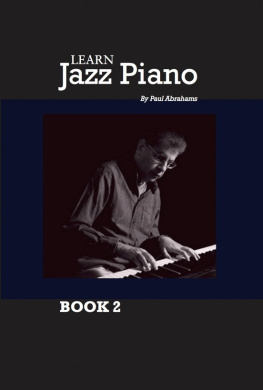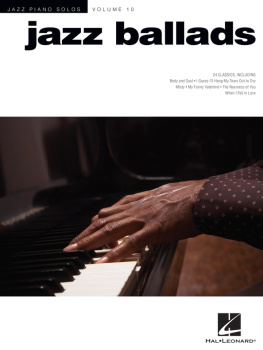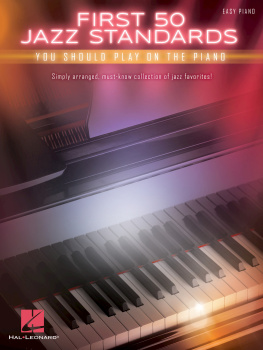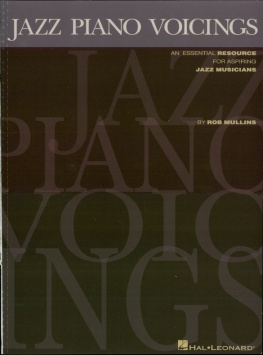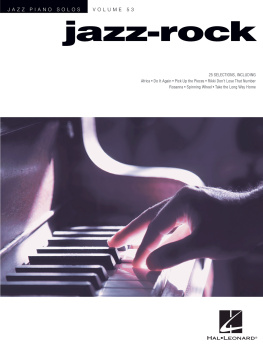

The author and publisher have provided this e-book to you for your personal use only. You may not make this e-book publicly available in any way. Copyright infringement is against the law. If you believe the copy of this e-book you are reading infringes on the authors copyright, please notify the publisher at: us.macmillanusa.com/piracy.
Contents
What Shall We Do with Her?
(19181935)
O N THE MORNING OF J ULY 23 , 1944, Marian McPartland stood on the south coast of her native England, looking across the English Channel. Part of a USO unit sent to entertain troops on the front lines in France, she was wearing combat boots and a helmet. She had spent the last month learning to pitch a pup tent and cook with a mess kit, rehearsing with a variety act called Band Wagon, fronted by an American comedian named Don Rice. On her way, she had stopped by her parents home in Eastbourne to say good-bye and pick up the accordion her father had bought her years before, as she had been told there might not be pianos where she was headed. American troops had been flooding into England by the tens of thousands since early 1942, in preparation for the November assault on North Africa and then the continent itself. When the Americans arrived, a lot of British girls seemed to lose their minds. By the time the war was over, thousands had left home as war brides. Marian had met her first real beau in London, a handsome, dark-haired comedian and impressionist shed worked with in a vaudeville outfit. Theyd even lived together for a while in Camden Town, sharing a flat as well as the London stage. But David had shipped out to North Africa. Marian, like other young Brits, was smitten by American movie stars and swing musicians; she had even finagled a publicity photo of herself with Jimmy Cagney when he played for the USO.
The Normandy invasion originally had been planned for May but had been secretly postponed till June 6. On the evening of the assault, Marian had stayed up half the night, listening to thousands of planes passing overhead for hours and hours, a droning that seemed to go on forever. A month later, she found herself among the first entertainers assigned to bring good cheer and a few laughs to the men who survived those first few, bloody months. Twenty-six years oldan attractive brunette with a tall face, broad smile, and ready witshe had been working as a professional pianist under the stage name Marian Page for six years, ever since dropping out of the prestigious Guildhall School of Music and Drama to play piano in a novelty act led by Billy Mayerl, a hugely popular English entertainer. After the war started, she had joined the Entertainments National Service Association (ENSA) but had switched to the American United Service Organizations (USO), where the payand the entertainerswere much better. Since 1940 shed been barnstorming the provinces, entertaining soldiers in camps, mess halls, and vaudeville houses great and small.
But no experience in her background had prepared her for this moment. Born in 1918 near Windsor Castle and raised in a genteel, middle-class suburb in Kent, she had at first seemed destined for a career as a concert pianist. At seventeen, on the advice of an inspiring elocution teacher who had taken a special interest in her at Stratford House School for Girls, she had auditioned for the Guildhall in London. After three years, however, the lively beat of jazz and popular music had lured her away. Though Marian was by no means a jazz player yet, she had wide-ranging curiosity and a burning desire to learn.
As she looked across the Channel under the gray morning clouds, she wondered what lay ahead. The war was horrible, but surely there was something exciting there, too. She had never been out of England, so she had nothing to compare it with. But it somehow seemed so dull. Her parents were bound and determined to marry her off to a banker. Now that shed seen life on the road, heard the applause, tasted the glamourand, yes, felt the hard knocks and backstage boredomshe had found her path. She wasnt sure why. And she wasnt sure where it was leading her or what she might find. But as she stepped gingerly into the water and climbed aboard a small boat that would take her to France, somehow, she knew that making that crossing was something she needed to do. Little did she know that she was about to find her passion in lifeand become a war bride herself.
Before that fateful morning, Marians world had been almost entirely circumscribed by a thirty-mile stretch of the river Thames, from Windsor to Woolwich. As the river winds down from Oxfordshire, it picks up steam below the hill from which Windsor Castle commands the countryside. North lie the fields of Eton and the tenements of Slough. Widening into a great urban river at Londons Victoria Embankment, it flows slowly past the Guildhall School of Music and Drama, becoming ever wider as its horseshoe turns meander beyond the Tower of London and are ornamented by the remains of the once vibrant industrial machinery of shipping, manufacturing, and the long shore, until, nine miles east, it reaches Woolwich, where Henry VIII established the Royal Arsenal in 1513. Just south of Woolwich is the leafy suburb of Bromley, once an important stagecoach stop on the road to Hastings. The river shortly thereafter flows into a great estuary before spilling its bounty of fresh water into the North Sea.
Marians story began in Slough, where she was born Margaret Marian Turner at home, at 41 Sussex Place, March 20, 1918, eight months before the conclusion of the Great War and the year in which Englishwomen first got the vote. Marians father, Frank Turner, a civil engineer, worked in management at the Royal Arsenal in Woolwich, but with the war on, the arsenal was a dangerous place, exposed to aerial bombings, zeppelin flyovers, frequent accidents, and explosions. Because of that, it was probably decided that his wife, Janet, should bear her firstborn in Slough, across the river from Windsor.
Janets people, the Dysons, had an illustrious history in Windsor, both musical and political. In 1855, Marians great-grandfather Thomas Dyson had become a lay clerkan adult singerin the now world-renowned male choir at St. Georges Chapel, on the castle grounds. Ten years later, Thomas founded Dyson and Sons, pianoforte dealers, and set up shop at No. 10 Thames Street, across from the castle wall. Thomas was elected mayor of Windsor in 1890. For his improvements to the cityin particular, refurbishing a lovely promenade along the riverDyson was honored with a pagoda-like memorial fountain of polished pink stone, which still stands at the corner of Goswell Road and Barry Avenue.
St. Georges provided on-site housing for choir members and their families in the Horseshoe Cloisters, a stunningly preserved, two-story Tudor structure just across from the cathedral, with classic diagonal beams and wattle-and-daub walls of a redbrick hue. Thomas Dyson and his wife, Jane, lived at No. 14 with their seven children: Thomas George, Charles Frederick, Margarette Clara, Albert Harry, Arthur Edward, George Henry, and Sarah Annie. Marians maternal grandmother was Sarah Annie (called Annie). Marian, who also went by her middle name, was probably named after her great-aunt Margarette. Thomas (the younger) and Charles Frederick (called Frederick) joined their father in the family piano business, as did young George. Frederick played cello in a local orchestra and for much of his life was connected with the nearby Eton College Musical Society. The rooms at No. 14 must have rung out with music daily, as Thomas and Frederick practiced their hymns, Frederick played cello, and Annie taught piano lessons.
Next page
